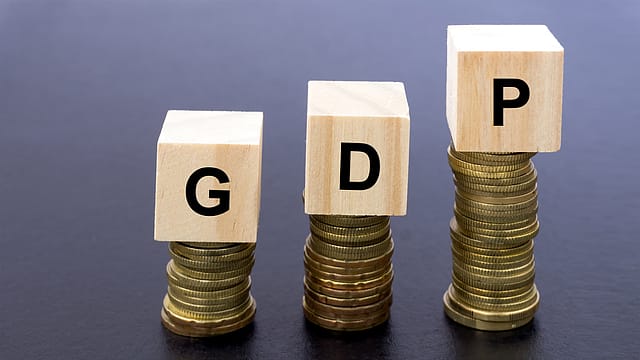Economic Survey pegs FY25 GDP growth at 6.5%-7%
ADVERTISEMENT

The Economic Survey 2023-24, tabled by Finance Minister Nirmala Sitharaman in the Parliament today, pegged the country’s FY25 GDP growth in the range of 6.5%-7%.
“Domestic growth drivers have supported economic growth in FY24 despite uncertain global economic performance. Improved balance sheets will help the private sector cater to strong investment demand. A note of caution is warranted here. Private capital formation after good growth in the last three years may turn slightly more cautious because of fears of cheaper imports from countries that have excess capacity,” says the Survey.
“While merchandise exports are likely to increase with improving growth prospects in advanced economies, services exports are also likely to witness a further uptick. A normal rainfall forecast by the India Meteorological Department and the satisfactory spread of the southwest monsoon thus far are likely to improve agriculture sector performance and support the revival of rural demand,” the Survey adds.
“However, the monsoon season still has some ways to go. Structural reforms such as the GST and the IBC have also matured and are delivering envisaged results. Considering these factors, the Survey conservatively projects a real GDP growth of 6.5–7 per cent, with risks evenly balanced, cognizant of the fact that the market expectations are on the higher side,” it says.
December 2025
The annual Fortune 500 India list, the definitive compendium of corporate performance, is out. This year, the cumulative revenue of the Fortune 500 India companies has breached $2 trillion for the first time. Plus, find out which are the Best B-schools in India.
The survey also pointed out that the escalation of the geopolitical risks could serve as a downside. “On the downside, any escalation of geopolitical conflicts in 2024 may lead to supply dislocations, higher commodity prices, reviving inflationary pressures and stalling monetary policy easing with potential repercussions for capital flows. This can also influence RBI’s monetary policy stance,” it says.
The survey also said that protectionism could affect the India’s global trade. “The global trade outlook for 2024 remains positive, with merchandise trade expected to pick up after registering a contraction in volumes in 2023. Conversely, increased fragmentation along geopolitical lines and renewed thrust on protectionism may distort merchandise trade growth, impacting India’s external sector. Global financial markets have scaled new heights, with investors betting on global economic expansion,” says the Survey.
